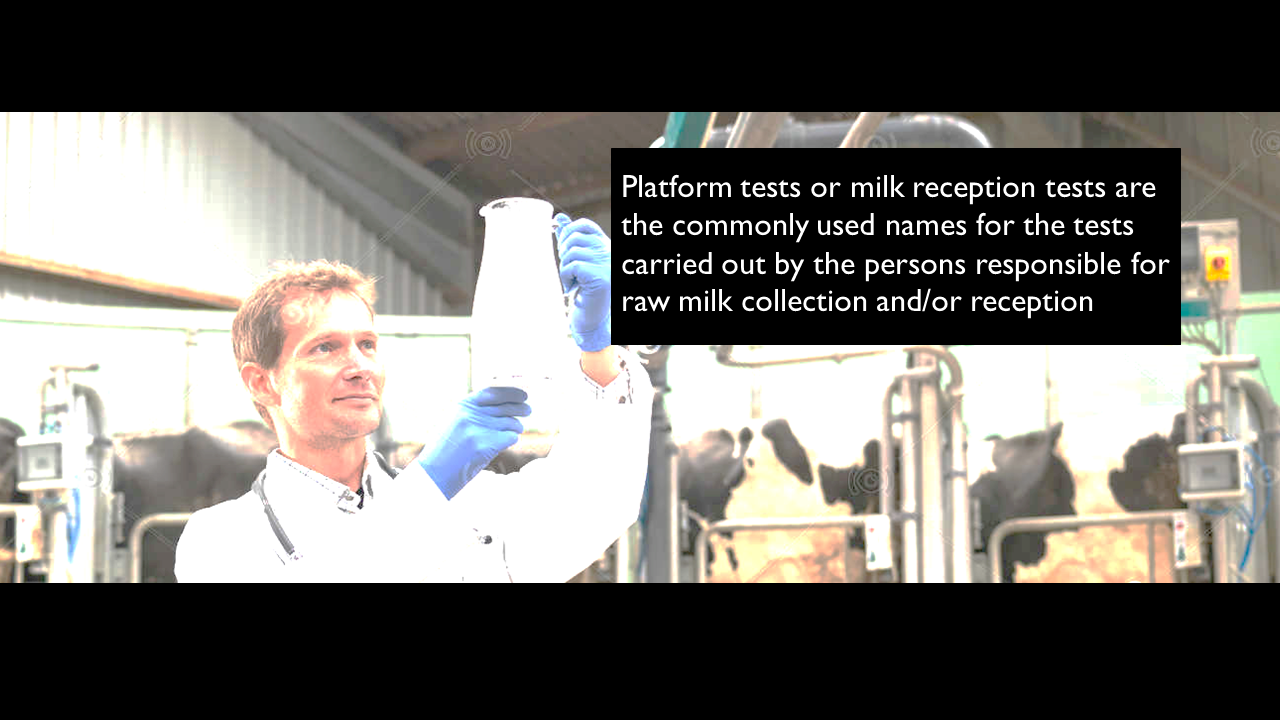Click here to view a video that explains how to test the quality of milk.
Platform tests or milk reception tests are the commonly used names for the tests carried out by the persons responsible for raw milk collection and/or reception. The tests in question are rapid quality-control tests - organoleptic tests being of great importance.
This is important from the point of view of processing and quality of end products because one single lot of milk of poor quality can spoil the rest of the milk it is mixed with.
Application of platform tests does not directly involve laboratory analysis of raw milk samples but in suspected cases, a sample from milk should be taken to the laboratory for further inspections for quality. This lot of milk should be taken aside and not mixed with bulk milk to verify its quality.

At milk reception sites - during milk collection and reception at milk plant - the platform tests can be applied as follows:
Organoleptic tests:
- The appearance of the surface of the milk and the lid is observed (Any abnormal colour of the milk).
- Any abnormal smell.
Lactometer test (determination of adulteration of milk by adding water):
- If the milk appears to be too thin and watery and its colour is "blue thin" it is suspected that milk contains added water.
Alcohol test (rapid determination of elevated acidity of milk):
- No reason to suspect that milk is sour.
- If the result of the alcohol test indicates too high acidity in milk a sample from milk is to be taken to the laboratory for further testing of titratable acidity.
One of the most important tasks of quality control is to control and follow up regularly the fulfilment of quality standards at every stage of the process flow to guarantee the best possible quality of end products.